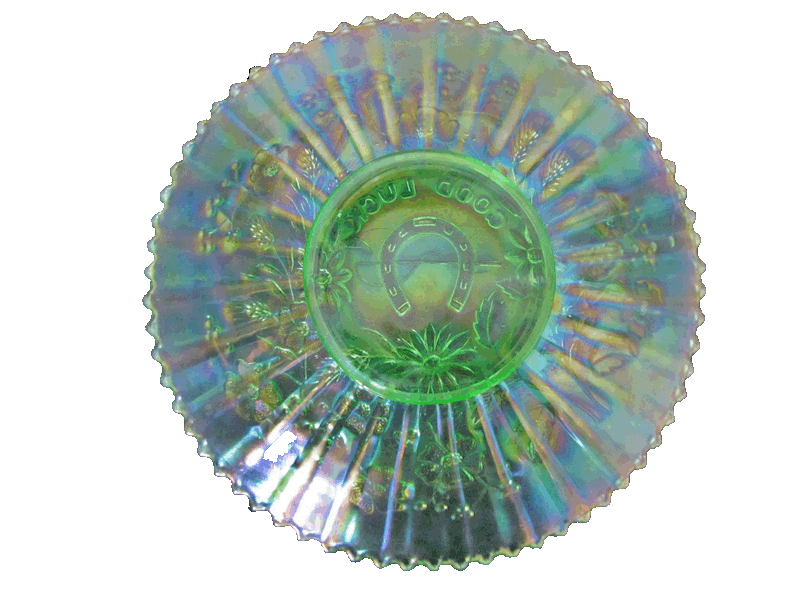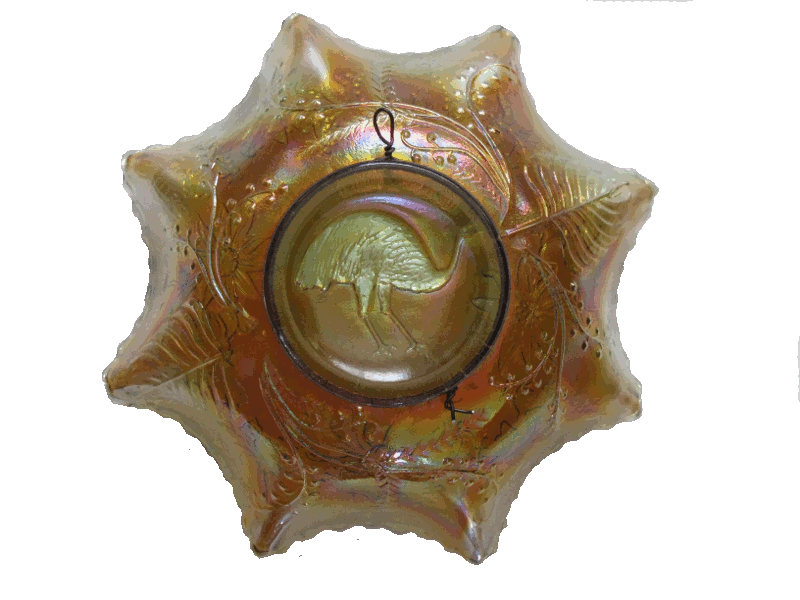The Northwood Glass Company was founded by Harry Northwood in November 1887 when he purchased the vacant
Union Flint Glass factory in Martins Ferry, Ohio. Production commenced in January 1888 with mould blown Opalescent, and Case Glass pieces, all of which are highly collected today.
In 1892 a new factory was built in Ellwood City, Pennsylvania where production began in October of that year, and new lines added, to those already being produced.
Financial problems plagued the company and in February 1896 production was halted and two months later Harry Northwood opened a new company,
the Northwood Glass Company of Indiana in Pennsylvania, in the factory that was once owned by the Indiana Glass Company.
It was here that the first glass, bearing the Northwood trademark, was produced bearing the word Northwood in script.
Ownership of the Indiana plant was eventually transferred to Thomas Dugan who later sold it to the National Glass Company in 1899.
Harry Northwood returned to England when he accepted a position as the London Representative of the National Glass Company, it was to be a short lived move.
In 1901 National Glass Company was suffering serious financial problems, several factories under the National umbrella were forced to combine or had already folded and the decision to reorganize
the company was made.
One of these decisions was to sell the Indiana factory back to Thomas Dugan.
It was then, that Harry Northwood cut all ties with the National Glass Company, and in 1902 bought the Hobbs Brockunier factory in Wheeling, West Virginia
and by that Autumn H. Northwood and Company were in production.
In 1907 Fenton Art Glass Company released a line of cheaply made iridized glass and carnival glass as we know it was born.
Harry Northwood was quick to produce his own line of iridized glass in the spring of 1908, called Golden Iris, which is now called Marigold.
New colours purple, green and cobalt blue soon followed.
The pastel colours, white, ice blue and ice green went into production in 1912.
During the years of its carnival production the Northwood Company produced nearly 100 patterns in many colours and shapes.
Grape and Cable would probably be the easiest of Northwood’s patterns to be found in Australia, along with Rustic Vases, with exception of the Funeral sized vases.
Some shapes and colours are rarely found locally, i.e. hatpin holders, comports, breakfast sets.
The famous Peacocks on the Fence pattern, is found in fair numbers in some colours, mostly marigold, and amethyst, especially with the pie crust edge,
ruffled bowls and plates seem to be a lot scarcer for some reason. In some patterns plates are particularly hard to find, but with Peacocks on the Fence the ice green,
white and marigold plates, are some of the most common plates found.
Another pattern popular with Australian collectors are Good Luck bowls and plate, and luckily we seem to have received a lot of the pastel colours, ice blue and ice green in particular.
Most, if not all, of the known ice green Good Luck plates seem to have been located in Australia and most noticeably in South Australia.
For some reason very few Rose Show or Poppy Show pieces were found locally, until a few years ago, yet they are another two of Northwood’s most highly collected patterns.
Thanks to the internet and eBay most collections would have an example these days.
Northwood produced over a hundred patterns, and within each of those patterns there are variations, plus a multitude of different shapes, colours, back pattern, edge treatments
and even whimsy’s. It would be impossible to have photographs of every pattern on this website, so a select few have been chosen to illustrate the detail, intricacy and beauty of Northwood Carnival Glass.





